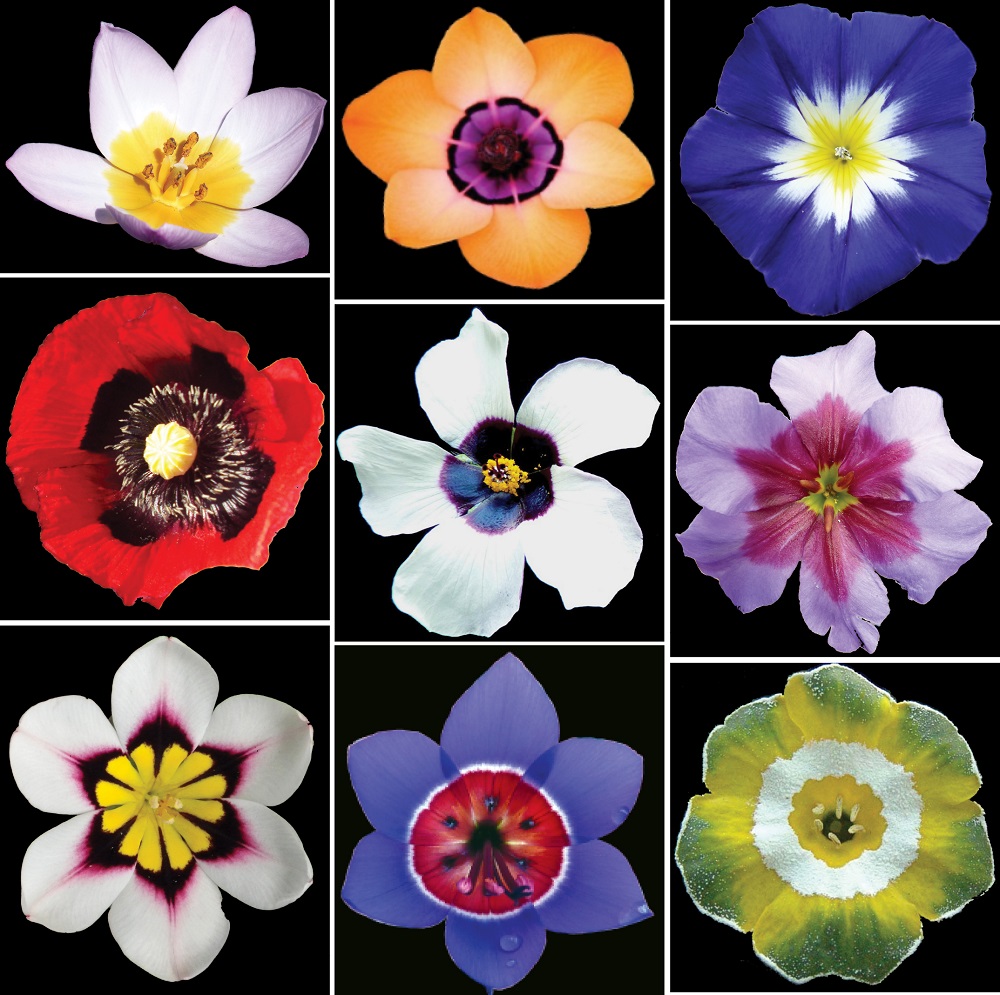I received my masters degree in Cell and Molecular Biology (2006) from the Ecole Normale Supérieure of Lyon (France) followed by a PhD in Plant Development (2011) at the University of Grenoble and the Ecole Normale Supérieure of Lyon (France). During my PhD, in the labs of Francois Parcy and Charlie Scutt, I studied the properties of LEAFY, a central regulator of flower development, which is also linked with the emergence of flowering plants.
I have been working with flowers ever since: in 2011, I joined the lab of Beverley Glover (Department of Plant Sciences, Cambridge) first as a Junior Research Fellow (Queens' College) and Marie Curie Post-doctoral Fellow, then as a Herchel Smith Fellow. My post-doctoral work aimed to understand how living organisms can produce iridescence. Iridescence is an optical trick generated by the interaction of light with minute structures organized on or just below the surface of plants and animals, thus creating visible colours that are independent of chemical pigments. In flowers, the iridescent effect is due to ordered striations (like those on a CD) of the cuticle on the petal epidermis and pollinators can use this iridescence as a cue to detect flowers. I developed Venice mallow (Hibiscus trionum) as a model species and combined biomechanical modelling and optics with modern genetic analysis, live-tissue imaging and behavioural ecology to understand how and when these nanostructures develop. This project allowed us to discover original pathways used by flowering plants to shape their surfaces and communicate with insects.
I joined the Sainsbury laboratory as a group leader in September 2017 to start investigating pattern formation in petals.
Please email me for further details if you’d be interested in joining our team!
Research Interests
Trying to understand how very simple reactions between very simple molecules happening at the microscopic scale can combine to generate the complexity of life is a pure source of joy that leads to exciting discoveries. Patterning mechanisms are particularly fascinating because they are at the heart of developmental and evolutionary processes. Both plants and animals rely on patterning to produce their body parts and to sculpt these emerging organs. Patterning occurs at the microscale too, to specify cell types that generate the highly-organized architecture of functional tissues. Evolution acts on these mechanisms to generate morphological diversity. The patterns on the petals of flowering plants are striking examples of evolutionary diversification by natural selection. These patterns are functionally relevant as they play crucial roles in both pollinator attraction and in protection of pollen against UV damage. As the mechanisms that account for pattern formation at multiple scales remain largely unknown, our group will be working to understand how clear boundaries can be established within the petal epidermis and modified by evolutionary mechanisms.
This figure represents various examples of bullseye patterns commonly found in flowering plants.
Teaching
Since 2011, I have been fellow in Natural Sciences at Queens’ College, Cambridge. I received the Prize for Outstanding Contribution to College Education in 2016. Information related to teaching can be found here: http://www.queens.cam.ac.uk/dr-edwige-moyroud
Key Publications
A full list of publications can be found here:
https://scholar.google.co.uk/citations?hl=en&user=bFBO7O4AAAAJ&view_op=list_works
Selected Publications
Moyroud, E., Wenzel, T., Middleton, R., Rudall, P.J., Banks, H., Reed, A., Mellers, G., Killoran, P., Westwood, M.M., Steiner, U., et al. (2017). Disorder in convergent floral nanostructures enhances signalling to bees. Nature. http://www.nature.com/doifinder/10.1038/nature24285
Moyroud, E., Monniaux, M., Thévenon, E., Dumas, R., Scutt, C.P., Frohlich, M.W., and Parcy, F. (2017). A link between LEAFY and B-gene homologues in Welwitschia mirabilis sheds light on ancestral mechanisms prefiguring floral development. New Phytol.
Available at: http://doi.wiley.com/10.1111/nph.14483.
Sayou, C.*, Monniaux, M.*, Nanao, M.H.*, Moyroud, E.*, Brockington, S.F., Thévenon, E., Chahtane, H., Warthmann, N., Melkonian, M., Zhang, Y., et al. (2014). A promiscuous intermediate underlies the evolution of LEAFY DNA binding specificity. Science 343, 645–8.
Available at: http://www.ncbi.nlm.nih.gov/pubmed/24436181.
* Equal contribution
Moyroud, E., Minguet, E.G., Ott, F., Yant, L., Posé, D., Monniaux, M., Blanchet, S., Bastien, O., Thévenon, E., Weigel, D., et al. (2011). Prediction of regulatory interactions from genome sequences using a biophysical model for the Arabidopsis LEAFY transcription factor. Plant Cell 23, 1293–306.
Available at: http://www.pubmedcentral.nih.gov/articlerender.fcgi?artid=3101549&tool=pmcentrez&rendertype=abstract.
Reviews
Moyroud, E., and Glover, B.J. (2017). The Evolution of Diverse Floral Morphologies. Current Biology. 27, R941–R951. http://dx.doi.org/10.1016/j.cub.2017.06.053
Moyroud, E., and Glover, B.J. (2016). The physics of pollinator attraction. New Phytol. Available at: http://doi.wiley.com/10.1111/nph.14312.
Moyroud, E., Kusters, E., Monniaux, M., Koes, R., and Parcy, F. (2010). LEAFY blossoms. Trends Plant Sci. 15, 346–352.
Available at: http://dx.doi.org/10.1016/j.tplants.2010.03.007


